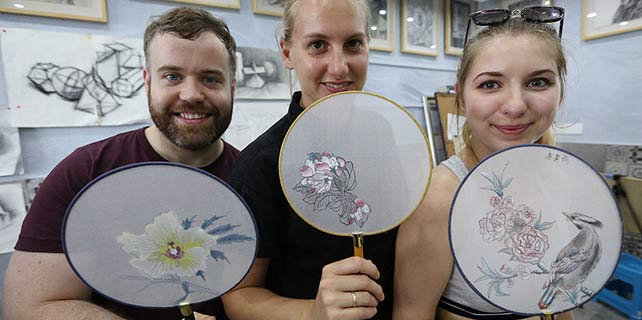Russian scientists create transparent sun filter
Far out, man! Missing galaxies can be found by studying the ultraviolet universe. [Photo/NUST MISiS]
Researchers at the National University of Science and Technology MISIS (NUST MISIS) have developed a universal protective filter against ultraviolet radiation by modifying zinc oxide nanoparticles. Transparency is the highlight of the new technology. There is also a Russian patent for the technology.

Most people have experienced a sunburn caused by ultraviolet radiation whose intensity exceeds the skin's natural protective ability to tan. Moreover, ultraviolet radiation can damage many polymers (plexiglass, polyethylene, polypropylene, etc.), a phenomenon known as ultraviolet ageing.
Various filters and additives to polymer compositions and suntan creams are widely used in the world to protect against radiation's harmful and damaging effects. Filters are usually metal oxide based, such as titanium dioxide or zinc oxide. But some sources have reported that titanium dioxide nanoparticles may cause cancer, while zinc oxide is inconvenient in that it is white in color (it is the main component of ZnO-based white paint).
To achieve a universal UV safety filter, NUST MISIS researchers, in cooperation with the Blokhin Russian Oncological Scientific Center, came up with a new approach based on the chemical synthesis of zinc nanoparticles with a modified surface.
They learned how to control the optical properties of zinc oxide nanoparticle-based UV filters directly in the process of their chemical synthesis. During experiments, a solution of nanoparticles and polypropylene film with a nanostructured additive demonstrated 100% absorption of Type B ultraviolet.
"We have synthesized zinc oxide nanoparticles with a modified surface," MISIS researcher Svetlana Senatova, PhD Chemistry, said. "The study of how a modified surface impacts the chemical and physical properties of zinc oxide nanoparticles has shown that the resultant nanoparticles can be used as safety filters against UV radiation. Our in vitro experiments have demonstrated the lack of hematoxicity in synthesized nanoparticles with a surface modified by silane-containing compounds as they were incubated with donor blood."
 |
|
Sun doesn't set for five days at the South Pole. [Photo/NUST MISiS] |
The incubation (aging for a certain time) was needed to see how the nanoparticles influenced the blood of healthy people. After all, a cream with a new UV filter has the potential to penetrate the skin and get into the blood stream. According to the researchers, modifying the surface of zinc oxide particles leads to greater transparency in the visible part of the spectrum, something that makes it possible to include them in the composition of both sunblock creams and transparent polymers.
These materials can be used to manufacture transparent food containers, film, or face panels for open-air structures. Moreover, a modified surface of nanoparticles can reduce the amount of added UV filtration by 5−10 times, which is a much more cost effective approach.
The research paper was published in Current Nanoscience and Journal of Alloys and Compounds. There is a Russian patent for this.
SPUTNIK






















